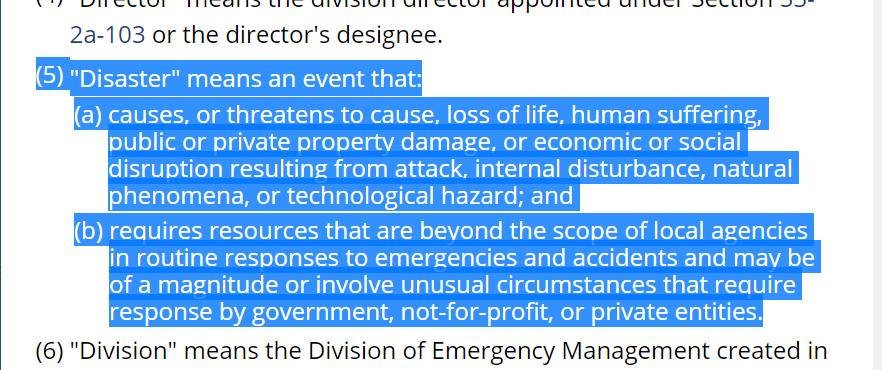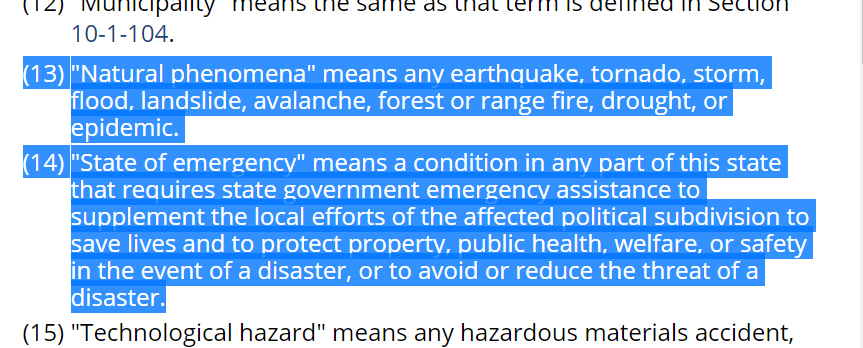Yesterday, Governor Gary Herbert reissued an executive order declaring a state of emergency. All state of emergency orders are in effect for one month at a time.
Utah has been under a state of emergency for the pandemic since March 6, 2020.
A state of emergency is a legal status in state code for the operations of state government that allow state government the flexibility it needs to respond to an emergency situation.
Part of that flexibility could include the following:
- Reissuing short-term executive orders.
- Various purchases under emergency procurement.
- Using the Utah National Guard.
Some have said Utah has issued too many orders this year. Most of those executive orders are updates to prior orders issued by the governor. See the list of executive orders at rules.utah.gov.
Some have also said emergency powers were never designed to be used for months at a time. The statutes that authorize the Governor to declare a state of emergency specifically include epidemics. Epidemics and pandemics are not short-lived. So it’s clear that state statute expects that if there’s an epidemic, a state of emergency could be in place for long periods of time.
Most of the time, state government doesn’t need to use the emergency powers. They exist in state statute for special times, such as the time we’re living in now — in the midst of a pandemic with no end in sight.
- People in Utah continue to die from COVID-19.
- Though case counts are declining, the disease continues to spread. It is not contained.
- Populations are still disproportionately affected by COVID-19, namely our Hispanic, American Indian and Pacific Islander communities.
- We need to protect our hospital systems.
- We need to maintain a stockpile of PPE in case of future surges of the disease.
- We’re just starting the school year, which will be the largest continuous congregation of people since March. We need to be ready to respond to outbreaks in the school setting.
We are not out of the woods yet.
All states in the United States and the federal government are operating under a state of emergency.
The very nature of a pandemic is a situation that is fluid and requires constant adaptation based on new information. Every day, we learn more information about COVID-19, the way it impacts different populations, the ways to best stop its spread, what is working in other countries and other states, and how we can mitigate economic impacts.
In addition, there are a number of programs the state could potentially lose access to if we don’t have a state of emergency in place:
- FEMA’s public assistance grants: Without a state of emergency in place, Utah government entities would not have access to more than $95 million. Hospitals would not be able to access $19 million in federal reimbursements.
- FEMA’s individual assistance grants: The Utah Department of Workforce Services is requesting $445 million in the federal share of Lost Wages Assistance.
- Small Business Administration loans for economic injury: So far, Utah has received over $5.2 billion under the Paycheck Protection Program and $1.2 billion in Economic Injury Disaster Loans.
- Federal Title 32 cost share for the Utah National Guard: So far, the federal share of National Guard costs have been about $10 million.
- State Disaster Recovery Restricted Account: It’s one of our rainy day funds that help maintain state agency budgets through emergency work and purchases.
We are still very much in an emergency situation, and all the work going on will ensure we have the best chance of economic recovery and the best chance of slowing the spread of the pandemic. We’re here to protect lives and livelihoods.



